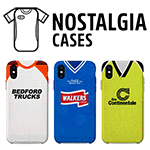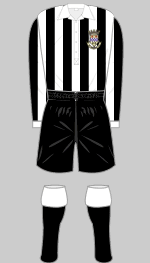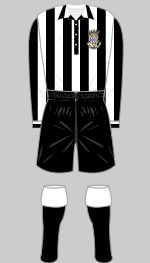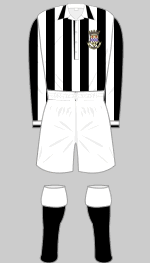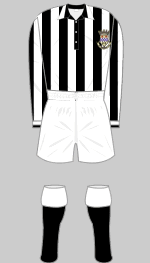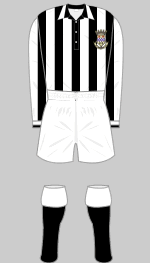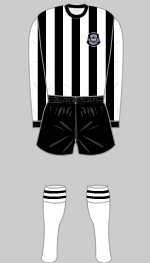Kit History
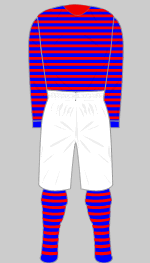
1880 c m
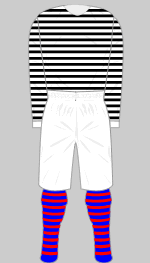
1883-1884 a m
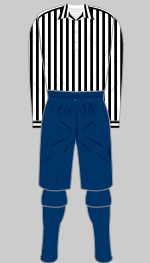
1884-1898 m o
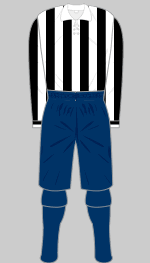
1898-1901 a m
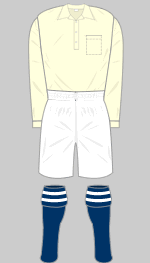
1901-1907 b m
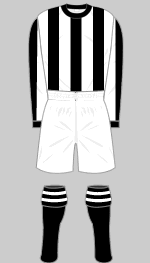
1907-1908 d m o
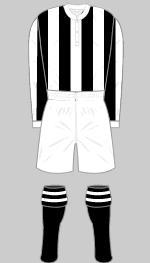
1908-1910 a
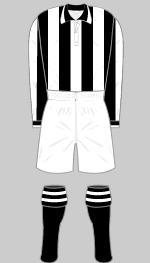
1912-1913 a m o
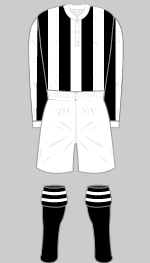
1913-1917 a m
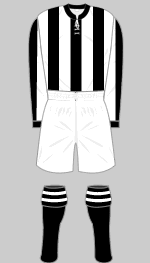
1917-1919 m

1920-1924 m
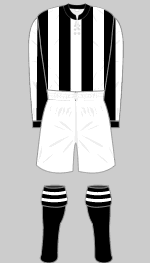
1924-1934 a m
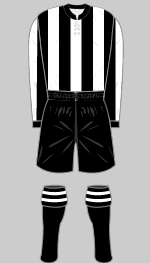
1927-1929 away i
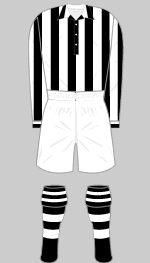
1934-1937 m
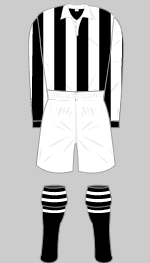
1937-1938 o
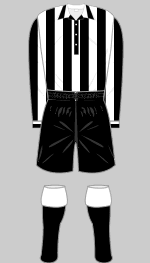
Jan 48-Dec 49 i
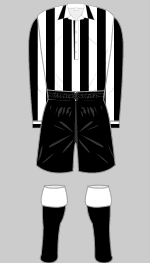
1951-1952 r
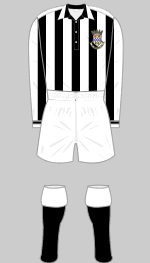
1956-1957
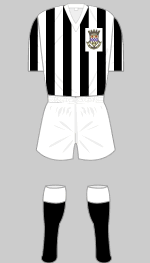
1957-1958 i r
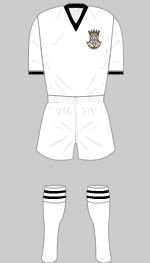
1958-Jan 59 r
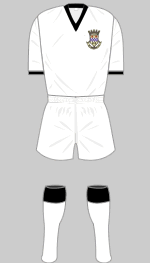
Feb 59-1960 1 r
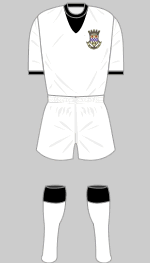
1959-1960 2 o r
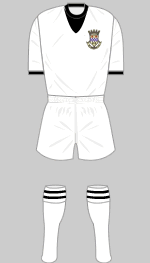
1960-1961 r
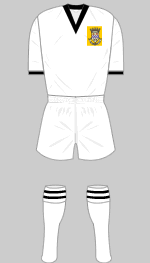
Aug-Dec 1961 o r
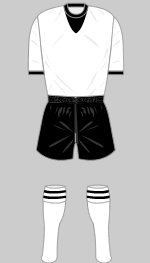
Jan-May 1962 r
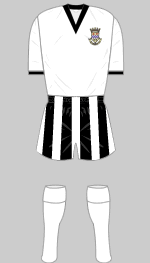
Aug 1962 a o r
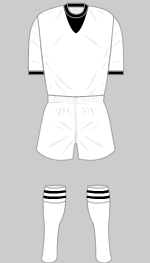
Sept 62-1963 r
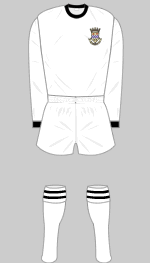
Aug-Dec 1963 a o
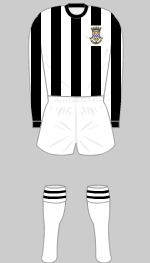
Jan-May 1964 a r
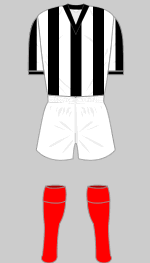
1964-1965 1 a o
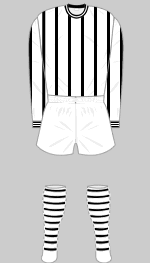
1964-1966 2 r
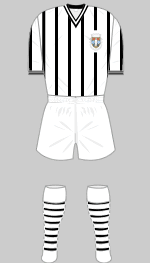
1966-1968 a s
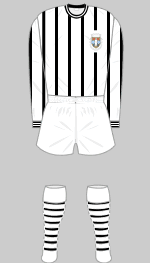
1966-1968 a s
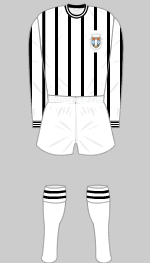
1968-1969 s
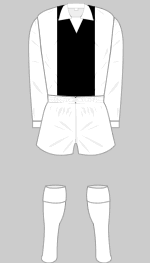
1972-1973 h i q r
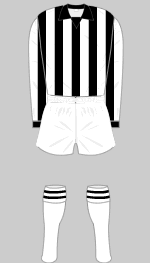
1973-1976 a i
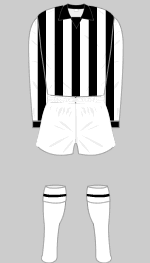
1976-1977 a
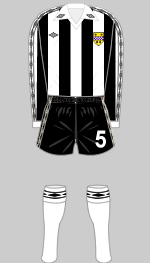
1977-1979 a r
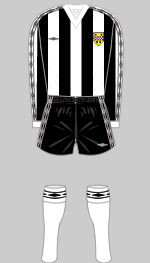
1979-1981 a i r
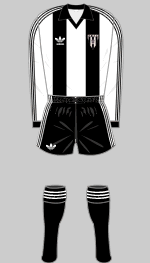
1981-1982 a f l
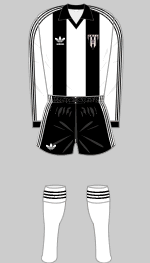
April 1982-1983 l
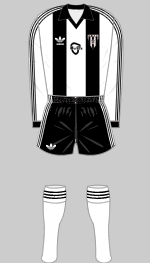
1983-1984 a
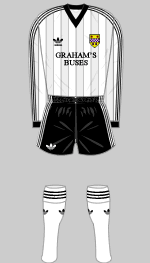
1984-1987 a g n
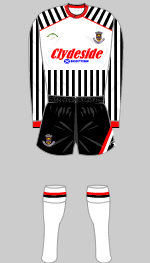
1987-1989 a g r
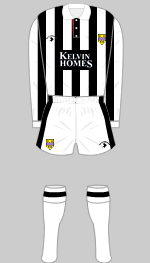
1989-1991 a q r
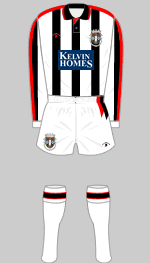
1991-1992 a r
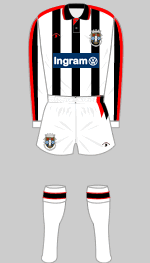
1992-1993 a r
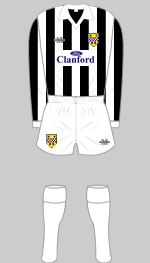
1993-1994 a
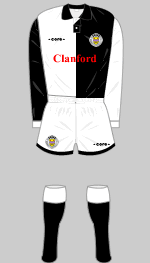
1994-1995 a
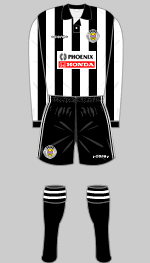
1995-1996 a
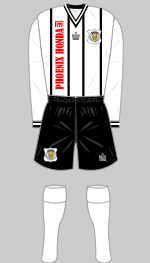
1996-1997 a
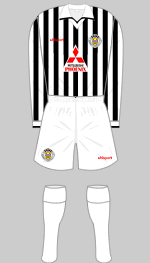
1997-1998 a
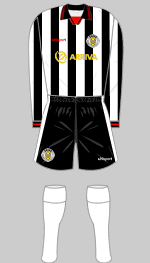
1998-1999 a q
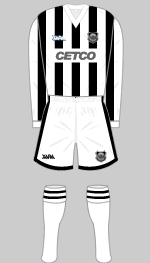
1999-2000 a
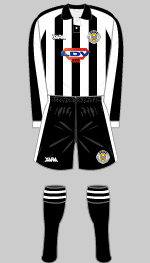
2000-2001 a
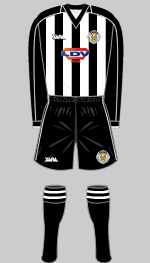
2001-2002 a
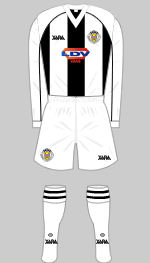
2002-2003 a
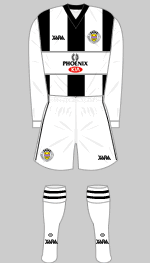
2003-2004 a
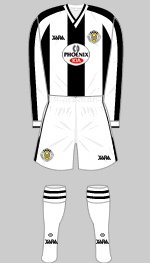
2004-2005 a
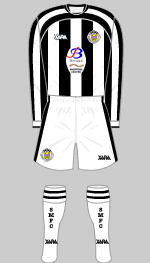
2005-2006 a q r
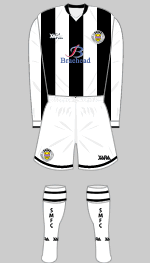
2006-2007 a r
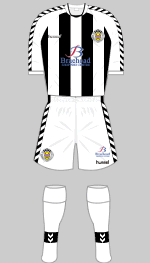
2007-2008 j r
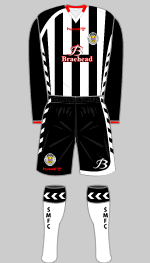
2008-2009 a j
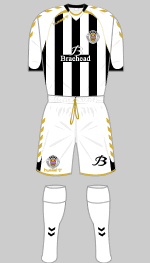
2009-2010 m r
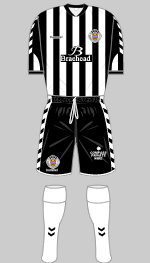
2010-2011 p r
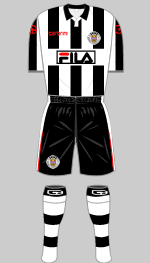
2011-2012 m r
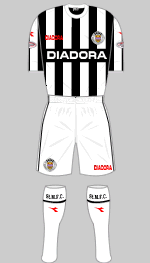
2012-2013 m
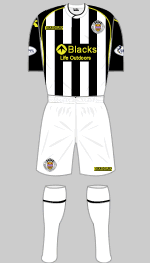
2013-2014 m

2014-2015 m
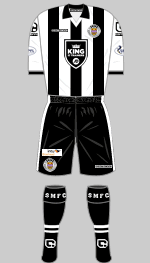
2015-2016 m
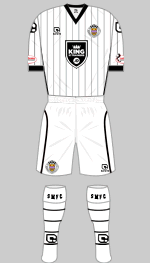
2016-2017 m
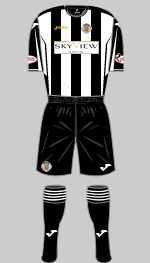
2017-2018 m
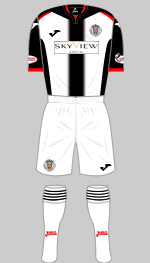
2018-2019 m
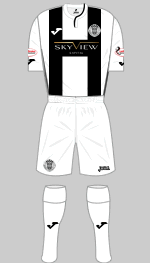
2019-2020 m
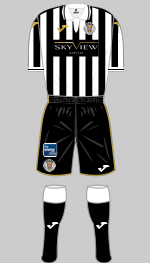
2020-2021 m
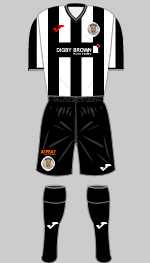
2021-2022 m
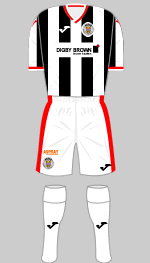
2022-2023 m
Background
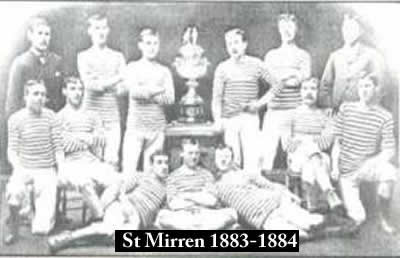 St Mirren play in Paisley, an industrial Renfrewshire town to the
south-west of Glasgow, that became associated with weaving during the
nineteenth century, when demand grew for cheap imitations of the famous
teardrop motif from India that became known as "Paisley Pattern."
According to John Byrne (Scottish Football Historian September/October
1984) a group of young men formed Venus cricket club in 1874. Seeking financial help, they approached a local businessman
who contributed 10/- (50p) on condition a name with local associations
was used. The lads chose "St Mirren", after an Irish monk,
St Mirin, the town's patron saint. The club played cricket in the summer
and rugby football in the winter. In 1877 a motion to play by association
rules was agreed and two members walked to Glasgow to buy a ball (there
were not enough funds for the train fare!). Taking pity on the boys,
the shopkeeper gave them their fare home, adding they were the first
from Paisley to buy a ball from him.
St Mirren play in Paisley, an industrial Renfrewshire town to the
south-west of Glasgow, that became associated with weaving during the
nineteenth century, when demand grew for cheap imitations of the famous
teardrop motif from India that became known as "Paisley Pattern."
According to John Byrne (Scottish Football Historian September/October
1984) a group of young men formed Venus cricket club in 1874. Seeking financial help, they approached a local businessman
who contributed 10/- (50p) on condition a name with local associations
was used. The lads chose "St Mirren", after an Irish monk,
St Mirin, the town's patron saint. The club played cricket in the summer
and rugby football in the winter. In 1877 a motion to play by association
rules was agreed and two members walked to Glasgow to buy a ball (there
were not enough funds for the train fare!). Taking pity on the boys,
the shopkeeper gave them their fare home, adding they were the first
from Paisley to buy a ball from him.
The club became known as "The Saints" or "The Buddies", a corruption of "Paisley Bodies", the nickname for natives of the town.
The club played their first match in October 1877, beating Johnstone Britannia at their home ground, then Shotroods. They entered the Scottish FA Cup for the first time in 1880 and the following year were beaten in the final of the Renfrewshire Cup by Thornliebank. They have subsequently won this competition no fewer than 47 times. In March 1890 they played their arch-rivals, Morton at Cappielow in a night-time game illuminated by patent oil lamps - one of the earliest "flood lit" matches on record.
Since 1898 St Mirren have generally worn black and white vertical stripes, but around 1900 they played in cream jerseys.
Their reputation was such that in 1890 they became founder members of the Scottish Football League, which was dominated by clubs from the West of Scotland. Their career did not start well and they had to seek re-election at the end of their first two seasons but in 1893 they finished third. In 1894 they moved into Love St, their current home. In 1908 they reached the Scottish Cup final for the first time but were trounced 1-5 by Celtic. That same year, the SFA ordered that Love St be closed for two weeks after supporters pelted the referee with ash and stones following a disallowed goal. Crowd disorder is by no means a modern phenomenon.
In 1912 and 1914, St Mirren finished last but, under the rules in force at the time, they were re-elected to the First Division and avoided relegation. In 1921 they again finished last, winning only seven matches out of 42 but once again they were spared the drop, the Second Division being suspended at the time. Love Street was comprehensively redeveloped this season and the club took part in an international tournament hosted by CF Barcelona. In 1926, the Buddies won their first major trophy, beating Celtic 2-0 to win the Scottish FA Cup.
In 1935, a year after reaching the Scottish Cup final once more (beaten 0-5 by Rangers), the Saints were relegated for the first time in their history but bounced back immediately.
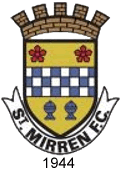 Despite mediocre pre-war performances, St Mirren were placed in Division
A (the top level) after the Second World War but enjoyed little success
until 1959 when they won the Scottish Cup for the second time.
Despite mediocre pre-war performances, St Mirren were placed in Division
A (the top level) after the Second World War but enjoyed little success
until 1959 when they won the Scottish Cup for the second time.
The club crest, inspired by the Paisley coat of arms, appeared on the team shirts for the first time during the Second World war but did not feature regularly until the 1950s. A slightly different version was worn 1958-60.
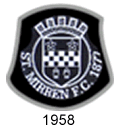 Between
1958 and 1964 the team played in white jerseys, retaining their striped shirts as a change strip. The striped
shorts worn in 1962-63 attracted general derision and were quickly dropped while the striped shirts were restored to first choice in January 1964.
Between
1958 and 1964 the team played in white jerseys, retaining their striped shirts as a change strip. The striped
shorts worn in 1962-63 attracted general derision and were quickly dropped while the striped shirts were restored to first choice in January 1964.
In 1967 the Saints were relegated after a series of poor seasons but had no difficulty in regaining their status, winning the Second Division championship at the first time of asking.
The crest was dropped in 1972 when such things had become unfashionable but the older version reappeared in 1977, now embroidered directly onto the shirts.
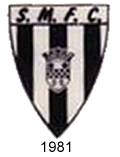 In 1977 they won the First Division championship (now the second tier
following the restructuring) to take their place in the Scottish Premier
Division. After finishing third in 1980 (equalling their best ever league
position), they qualified for the UEFA Cup. A brand new club crest was introduced in 1981 with the traditional coat of arms now incorporated into a larger shield design carrying the traditional black and white stripes worn by the team. This proved unpopular with many supporters and was dropped in 1984 in favour of the original version.
In 1977 they won the First Division championship (now the second tier
following the restructuring) to take their place in the Scottish Premier
Division. After finishing third in 1980 (equalling their best ever league
position), they qualified for the UEFA Cup. A brand new club crest was introduced in 1981 with the traditional coat of arms now incorporated into a larger shield design carrying the traditional black and white stripes worn by the team. This proved unpopular with many supporters and was dropped in 1984 in favour of the original version.
In 1987 the Saints won the Scottish Cup for the third time, which happens to be the last occasion that an all-Scottish side has lifted the trophy.
In 1991 the team finished bottom of the Premier Division but were (once
again) spared relegation following the decision to add two clubs to
the competition. The reprieve proved short-lived - the following season
they 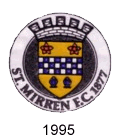 went down with Dunfermline.
went down with Dunfermline.
In 1995 the badge was placed on a circular field but this version proved short-lived. In 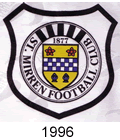 Scotland all coats of arms since 1672 must, by law, be registered with the Court of the Lord Lyon. After they pointed out to the football club that their arms were not registered, the castellation over the top was removed and a new version was introduced in 1996. The shield background was dropped the year after and ever since it has appeared on a simple disc.
Scotland all coats of arms since 1672 must, by law, be registered with the Court of the Lord Lyon. After they pointed out to the football club that their arms were not registered, the castellation over the top was removed and a new version was introduced in 1996. The shield background was dropped the year after and ever since it has appeared on a simple disc.
After eight seasons in the First Division
(second tier), a period that included an unpopular 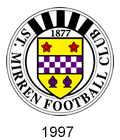 flirtation with halved
shirts, St Mirren were promoted as champions in 2000 only to drop down
again the following season. In 2006 they again won the First Division,
this time by ten clear points, to regain their place in the Scottish
Premier League.
flirtation with halved
shirts, St Mirren were promoted as champions in 2000 only to drop down
again the following season. In 2006 they again won the First Division,
this time by ten clear points, to regain their place in the Scottish
Premier League.
In 2009 St Mirren moved into a brand new stadium in Paisley's Ferguslie Park, financed by the sale of Love Street for retail development, which also raised sufficient funds to clear the club's debts.
For the club's 135th anniversary celebrated in 2012, a third strip based on their original narrow red and blue hooped colours was introduced.
In March 2013 St Mirren won the Scottish League Cup, their first cup win since 1987, but in 2015 they finished last in the Premier League and were relegated. After a few seasons consolidating in the second tier the Saints comfortably won the Championship title with 12 points to spare in 2017-18.
Sources
- (a) www.stmirren.info - this unofficial site is a real treat with a comprehensive photographic archive of past kits.
- (b) Wikipedia
- (c) Brian McColl
- (d) Airdrieonians FC - Images of Sport (Brian Bollen 2002)
- (e) London Hearts
- (f) mekeke.co.uk
- (g) Ralph Pomeroy
- (h) Alex Horsburgh
- (i) Alick Milne (HFK Research Associate)
- (j) Football Shirt Culture
- (k) jumpers4goalposts.com
- (l) Willie Kay
- (m) St Mirren Official Site
- (n) Iain Cameron
- (o) Keith Ellis (HFK Research Associate)
- (p) Alan Hogg
- (q) Bill Finlay
- (r) Ian McConnel
- (s) Brian Wright
Photograph courtesy of www.stmirren.info. Crests are the property of St Mirren FC. Crest history from www.stmirren.info.


